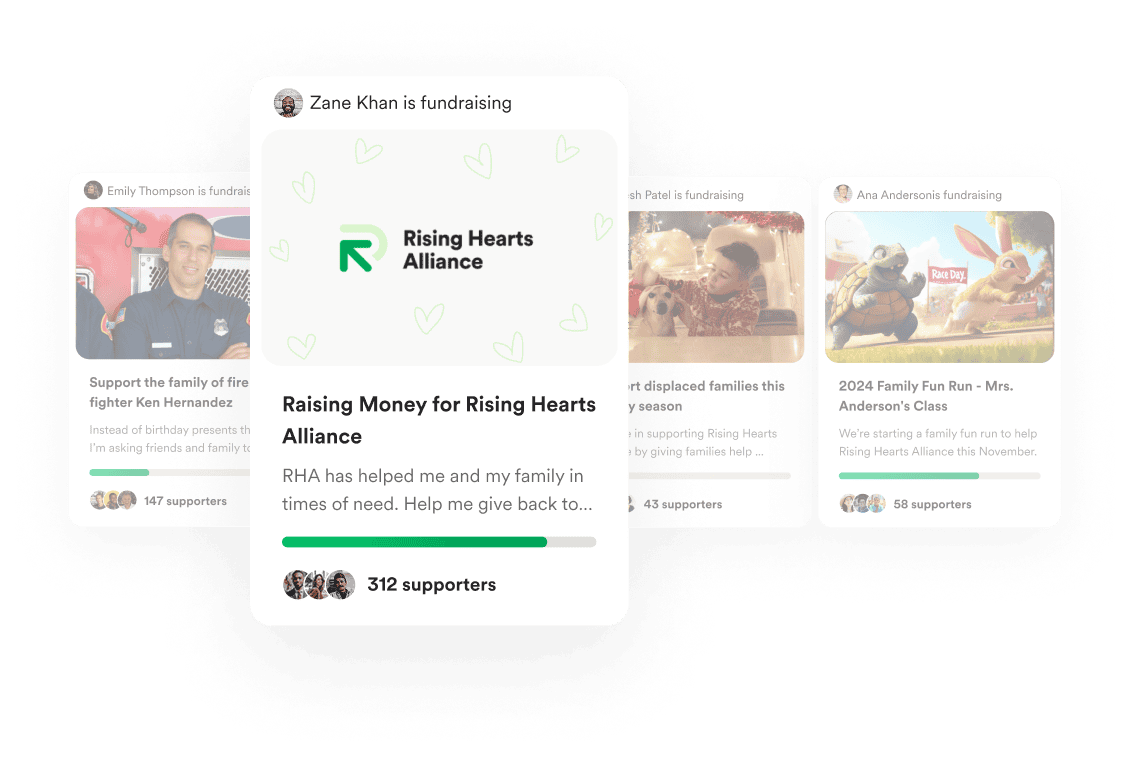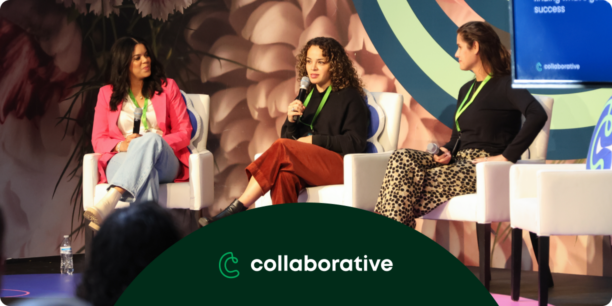9 Tips to Re-Engage Lapsed Donors Through Email

This blog was written in collaboration with Katrina Grant, Marketing Director at Dataro.
Acquiring and retaining donors takes strategic marketing, dedicated staff time, and ongoing stewardship. Yet, despite their critical role in nonprofit sustainability, the average North American nonprofit organization retained just 46% of its donors from 2022 to 2023.
The good news? Even modest improvements in donor reactivation and retention can drive significant fundraising gains.
To start generating this forward momentum, it’s essential to analyze who has lapsed—whether in giving or engagement—and develop a targeted re-engagement plan. In this post, we’ll explain how to identify unengaged supporters and share nine actionable strategies for bringing them back into your donor base.
Free donor retention email templates1. Establish a definition for an unengaged or lapsed donor
To set up an effective re-targeting strategy, it’s essential to identify which donors fall into the unengaged or lapsed category. By defining and segmenting these supporters, you can send personalized communications tailored specifically to them.
You can use a variety of filters to identify this group. Some common characteristics might include donors who:
- Haven’t opened one of your emails in more than 120 days
- Haven’t made a donation to your nonprofit in over a year
- Haven’t attended one of your events in over a year
- Haven’t volunteered for more than 90 days
Alternatively, you can integrate AI-powered tools into your customer relationship manager or CRM to automate this process, ensuring you never miss an opportunity for re-engagement. Dataro’s advanced machine-learning capabilities enhance donor behavior analysis and help identify the most promising audiences for campaign targeting.
With Dataro’s smart AI audiences feature, fundraisers can easily pinpoint lapsed donor segments (and other audiences based on propensity to give, behavior, or interest areas), streamlining the re-engagement process.
See how the Child Cancer Foundation did just thatOnce you’ve created your unengaged or lapsed donor segment, it’s time to begin outreach. Establish a process to move donors back into your engaged segment as they re-engage. Depending on your email marketing software and tools, you can likely automate this process based on actions like email opens or link clicks.
2. Target the right lapsed donors
You’ve identified your recently lapsed donors. Now what? One of the biggest challenges fundraisers face is knowing which donors to prioritize and how to approach them effectively.
Broad reactivation campaigns often miss the mark because they lack a personal touch. That’s why it’s crucial to further segment lapsed donors based on their behavior, engagement, and giving history.
AI-powered tools can help take this a step further by accurately identifying which lapsed donors are most likely to re-engage. This enables nonprofits to focus their resources and initiatives where they’ll likely have the greatest impact.
Unlike traditional segmentation methods that rely on broad categories or static donor data, machine learning models, like Dataro’s AI-powered donor predictions, can continuously analyze giving patterns, engagement trends, and the likelihood of repeat donations. This allows nonprofits to build highly targeted donor audiences based on real-time insights rather than guesswork.
These insights enable nonprofits to operate with data-driven precision, targeting donors who are most likely to re-engage.
3. Use a creative, mobile-friendly subject line
Standard email best practices apply to re-engagement emails, too. Start with a clear, compelling subject line. Keep it around 30 characters to ensure nothing gets cut off on mobile devices.
Capture supporters’ attention with words that create urgency and make the email feel personal, or use numbers to stand out. If it fits your brand’s voice, think of the subject line as a playful note to an old friend you haven’t heard from in a while.
Some examples of subject lines for personalized re-engagement emails could include:
- Jane, we miss you! Just checking in.
- Hey, Alexis! Let’s reconnect today.
- It’s been 90 days, Ted, but who’s counting? (It’s us.)
- Hello, out there! Is this thing on?
- Sara, make sure not to miss these 3 big updates!
Need some creative inspiration for your subject lines? Try using generative AI tools like ChatGPT or Dataro’s AI fundraising content writer to create fundraising email subject lines and tailor email content for more personalized donor communications.
4. Run A/B tests on your re-engagement email campaigns
Following industry standards is a great place to start with your re-engagement campaigns. However, as with other emails you send to your supporters, use A/B testing to see if different approaches garner greater engagement.
You can also save time and effort by using Dataro’s free A/B Test Randomizer tool, which generates a truly randomized list for your next A/B test. Upload your donor list and with one click, you can randomly assign each donor to one of two different groups.
With this method, you send two versions of your campaign to sample subsets of your target email segment, with one element being different. This might be the send time, subject line, promotional offer, or other variable. After running your test, review the open rate, click-through rate, and other engagement metrics for each. Whichever has a higher rate of engagement is the one you’ll send to your full list.
Investing some time into A/B testing your re-engagement email campaigns can help your nonprofit better understand your unengaged donors and the retention strategies that are most likely to get them to respond. Just remember to follow these best practices when conducting A/B split tests to ensure you draw the right conclusions.
5. Make a personal ask for donor feedback
Your re-engagement emails should include a message personally addressed to the lapsed donor mentioning that you haven’t heard from them in a while and wanted to check in. This greeting shows them that you’ve noticed their absence and care about them.
Take that personalization a step further by asking for feedback. This shows that you also care about their involvement with your nonprofit. You can include a link to a short donor survey or have your supporters reply directly to your email to collect responses on how they like to engage with your nonprofit, what their preference for email frequency is, and how you can improve your communications with them.
In general, people want to help, but they don’t always know how they can if you don’t ask them.
6. Focus on impactful storytelling
Supporters likely came to your nonprofit because they believe in its mission. Storytelling is a key tool for reminding your unengaged donors about the impact you make toward that mission thanks to people like them, so ensure your re-engagement emails elevate the story of your nonprofit.
Share how your work impacted a particular person who received your services. This provides a relatable main character to your story and an emotional tie. You can also tell your story by highlighting powerful data that shows the full extent of the problem you address, as well as how much progress you’ve made toward solving that issue.
With storytelling, you’re not just asking unengaged donors to re-engage—you’re showing them why they should.
7. Incentivize donor engagement
When trying to stand out in a crowded inbox, it can help to occasionally add an incentive to your email to further encourage engagement. As part of your re-engagement email, consider including something extra for the supporter in exchange for their attention.
For example, if the lapsed donor fills out your survey on how they like to best engage with your nonprofit, let them know you’ll send them some free branded swag from your nonprofit. You could also run a raffle for a limited period of time to win a ticket to your next fundraising event, letting your unengaged donor know that you’d love to see them again soon.
Another way to incentivize your unengaged donors is to highlight a matching gift campaign. Let them know that if they donate again now, their gift could be doubled. This encourages re-engagement because your supporters see how they can make an even bigger impact.
Creative ways to incentivize and thank donors8. Send an anniversary email
If it’s been a while since your lapsed supporter’s last gift, send an email reminding them of the gift they gave and what it has helped your nonprofit achieve. Use smart technology like Dataro to easily identify these audiences and automate your anniversary campaign targeting.
You can include a donation button in your email, suggesting they donate the same amount again or commit to a recurring gift to continue making a lasting impact on the population you serve.
If you have an unengaged supporter who ran a DIY peer-to-peer campaign last year for their birthday, you can also send them an anniversary email in advance of their birthday to wish them a happy celebration this year. This serves as a meaningful personal connection that demonstrates how your nonprofit values them and a nudge to consider fundraising for their birthday again this year.
Send your email a few weeks before their actual birthday so they have enough time to set up their campaign page and fundraise effectively for their big day.
9. Provide multiple options for giving
When encouraging unengaged donors to give again, it can be helpful to show them the many different ways they can support your nonprofit. This allows them to engage in the capacity that is best for them right now.
Some of the giving options you may want to highlight in your emails include:
- Opportunities for peer-to-peer-fundraising
- Reminders about event registrations
- Details on fundraising through Facebook using the Classy for Facebook integration
- Descriptions of current volunteer or in-kind donation needs
Another key giving option to highlight is signing up to become a recurring donor. Recurring monthly giving remains one of the most effective strategies for nonprofits to boost donor retention and lifetime value while building a stable and reliable source of annual revenue.
Dataro’s Recurring Giving Benchmark Report reveals that recurring donors are retained at nearly double the rate of single-gift donors (83% versus 45%). Because they’re retained longer and often contribute additional one-time gifts, recurring donors are 9x more valuable than one-time donors, according to Classy platform data.
You can even run an entire email campaign specifically targeted at turning lapsed donors into recurring donors. To encourage lapsed donors to support your cause again through recurring monthly gifts, lean into messaging that this type of giving is an easy, automatic giving option for busy supporters who may otherwise forget to check in often enough to donate.
Beyond email: Expanding your reach with free, earned channels
While email is a powerful tool for re-engaging lapsed donors, it’s only one piece of the puzzle. To truly maximize your reach, your nonprofit must meet its supporters where they already advocate, share, and inspire others to take action.
Built on a foundation of generosity and shared impact, GoFundMe’s community is 190 million people strong. Supporters do more than give—they rally others to join them, amplifying every donation and expanding your nonprofit’s visibility. By tapping into this built-in network of passionate advocates, you can organically grow your audience and bring new donors into your mission—without spending a dime.
That’s where GoFundMe’s free tools—like Nonprofit Pages, GoFundMe Profiles, and our new streaming widget—come in.
Nonprofit Pages
Nonprofit Pages offer a free, dedicated space to share your mission, connect with supporters, and tap into existing grassroots efforts. By claiming your page, you gain visibility into donor activity, access key donor insights, and empower advocates to fundraise on your behalf.
Beyond discovery on GoFundMe and search engines, Nonprofit Pages provide access to best-in-class fundraising technology—optimized checkout pages, built-in sharing tools, and top-tier security—backed by nearly 15 years of expertise in digital giving.
GoFundMe Profiles
Trust is shifting from institutions to individuals, and GoFundMe Profiles tap into this change. These Profiles let supporters showcase the nonprofits they back, inspiring their networks to give. By sharing donations and fundraisers, supporters amplify impact and build trust in ways organizations alone can’t—helping nonprofits reach new audiences through authentic advocacy.
Streaming widget
Keeping up with digital fundraising can be overwhelming, especially for small teams. GoFundMe’s streaming widget makes it easy by letting nonprofits and creators seamlessly integrate fundraising into livestreams on social media channels like Twitch and YouTube. With custom overlays, goal trackers, and live donation alerts, fundraising becomes more interactive and engaging.
Re-engage and revive your giving community
To successfully re-engage lapsed donors, it’s essential to remember that building lasting relationships takes consistent effort and strategic outreach, fueled by accurate donor insights. While reconnecting with donors who have drifted away may feel like a challenge, every effort made can bring tremendous returns.
With tools like Dataro’s AI-powered insights, personalized messaging, and targeted campaigns, nonprofits can not only reactivate past supporters but also nurture them into long-term advocates for their cause.
Additionally, GoFundMe’s free tools—such as Nonprofit Pages, GoFundMe Profiles, and our streaming widget—can expand your reach, allowing you to tap into a wider network of engaged advocates and amplify your impact.
By tailoring your approach to meet donors where they are, you can turn lapsed support into renewed commitment, creating a stronger, more sustainable foundation for your nonprofit’s mission.
Copy editor: Ayanna Julien

Expand your nonprofit’s network with GoFundMe



